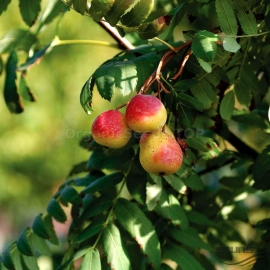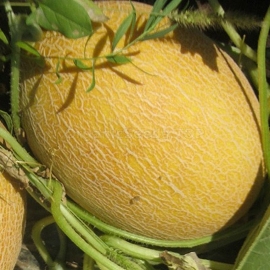


Organic Service Tree Seeds (Sorbus Domestica)
1.14 €
Wild Service Tree seeds have a deep dormancy within them, this requires a degree of patience to overcome and it is usually quite easy to get high levels of germination if the correct procedures are followed.
-
Organic Service Tree (Sorbus Domestica)
Wild Service Tree seeds have a deep dormancy within them, this requires a degree of patience to overcome and it is usually quite easy to get high levels of germination if the correct procedures are followed.
First prepare a free draining substrate into which the seeds are to be mixed, this can be a 50/50 mixture of compost and sharp sand, or perlite, vermiculite. The chosen substrate needs to be moist (but not wet), if you can squeeze water out of it with your hand it is too wet and your seeds may drown and die.
Mix the seeds into the substrate, making sure that their is enough volume of material to keep the seeds separated. Place the seed mixture into a clear plastic bag (freezer bags, especially zip-lock bags are very useful for this -provided a little gap is left in the seal for air exchange) If it is not a zip-lock type bag it needs to be loosely tied. Then write the date on the bag so that you know when the pretreatment was started.
The seeds first require a period of warm pretreatment and need to be kept in temperatures of 20 Celsius (68F) for a period of around 2 weeks . During this time make sure that the pretreatment medium does not dry out at any stage or it will be ineffective!
Next the seeds require a long cold period to break the final part of the dormancy, this is achieved by placing the bag in the fridge at (4 Celsius or 39F) for 30 weeks (although it is possible for germination to begin from the 16th week -so check the seeds every few weeks!). It is quite possible for the seeds to germinate in the bag at these temperatures when they are ready to do so, if they do, just remove them from the bag and carefully plant them up.
When the period of pre treatment has finished the seed should be ready to be planted. Small quantities can be sown in pots or seed trays filled with a good quality compost and cover them with a thin layer of compost no more than 1cm deep. For larger quantities it is easiest to sow the seeds in a well prepared seedbed outdoors once the warm and cold pretreatments have finished and wait for the seedlings to appear.
It has also been found that fluctuating pretreatment temperatures can give the best germination results and I have myself had excellent results by keeping the mixed seeds in a cold shed through the winter for the cold stage of their pretreatment and allowing the temperature to fluctuate naturally. Ungerminated seeds can have the whole warm and cold process repeated again to enable more seeds to germinate. Fresh seedlings can keep germinating for several years after the original sowing date.
Do not expose newly sown seeds to high temperatures (above 25 Celsius). Keep the seedlings well watered and weed free. Growth in the first year is usually between 10 and 50cm depending on the time of germination and cultural techniques and developing seedlings are usually trouble free. Allow them to grow for 1 or 2 years before planting them in a permanent position.
Products Viewed Before
Product code: 14949
1.14 €
It is a very early and stable variety, the fruit is oval attractive in shape, has a large size and a pronounced mesh on the skin, white makot, the weight of one fruit is 2-2.5 kg.

